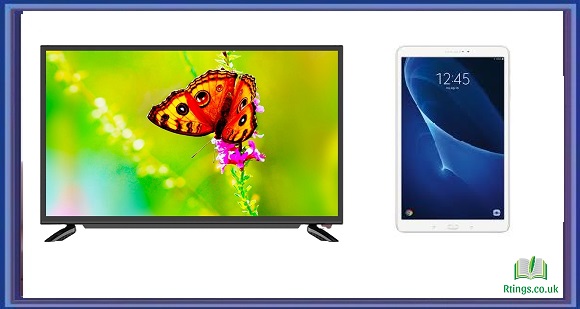Television technology has evolved significantly over the years, offering consumers a wide range of options in terms of size, resolution, and features. When shopping for a new TV, it’s essential to understand how TVs are measured to make an informed decision that suits your viewing preferences and space. This comprehensive guide will delve into the various aspects of TV measurement, including screen size, aspect ratio, resolution, and other factors that influence your television-watching experience.
Screen Size
The screen size of a TV is one of the most critical factors to consider when purchasing a television. It determines how large or small the display will be and greatly impacts your viewing experience. TVs are typically measured diagonally from one corner of the screen to the opposite corner, excluding the bezel or frame.
Screen size is typically expressed in inches, and you’ll often see TVs labelled with sizes like 32 inches, 55 inches, 65 inches, and so on. The choice of screen size largely depends on your room size, seating distance, and personal preferences.
Room Size and Seating Distance
The size of your room and the distance between the TV and your seating area play a crucial role in determining the ideal screen size. Here are some general guidelines:
Small Rooms: A TV with a screen size between 32 and 43 inches is usually sufficient in smaller rooms, such as bedrooms or kitchens.
Medium Rooms: Consider a TV in the 43 to 55-inch range for a balanced viewing experience for medium-sized living rooms or family rooms.
Large Rooms: In larger spaces or home theatres, opt for a larger TV, ranging from 55 inches and above, to create a more immersive cinematic experience.
Seating Distance: It’s important to balance screen size and seating distance. As a rough rule of thumb, the ideal viewing distance should be 1.5 to 2.5 times the diagonal screen size of your TV. For example, if you have a 55-inch TV, the optimal viewing distance would be around 6.9 to 11.5 feet.
Aspect Ratio
A TV’s aspect ratio determines the screen’s shape and how content is displayed. The two most common aspect ratios for TVs are:
16:9 (Widescreen): This is the standard aspect ratio for most modern TVs. It is well-suited for watching HD content and offers a widescreen format ideal for movies and most TV shows.
4:3 (Standard): This aspect ratio was prevalent in older CRT (cathode-ray tube) TVs. It’s less common today but may still be found in some legacy content or older TVs.
When considering the aspect ratio, it’s essential to match it to the content you’ll watch most frequently. Most modern TVs have a 16:9 aspect ratio, which is versatile and compatible with a wide range of content.
Resolution
Resolution refers to the number of pixels that make up the display on a TV screen. It determines the level of detail and clarity in the images and videos you watch. Higher-resolution TVs provide sharper and more lifelike visuals. Here are some common TV resolutions:
High Definition (HD)
HD (720p): HD TVs have a resolution of 720p, which means the screen has 720 vertical lines of pixels. This resolution is suitable for smaller screens (32 inches and below) or those with limited access to HD content. While it may provide a lower level of detail, it still needs to improve over the standard definition.
Full High Definition (Full HD or 1080p)
Full HD (1080p): Full HD TVs offer a resolution of 1920×1080 pixels, providing a much sharper and clearer picture than HD. It’s suitable for screens up to 55 inches and is the standard for most modern TVs.
Ultra High Definition (UHD) or 4K
4K Ultra HD (2160p): 4K TVs have a resolution of 3840×2160 pixels, offering four times the number of pixels as Full HD. This results in incredibly detailed and crisp images. 4K TVs are ideal for larger screens (55 inches and above) and are becoming increasingly popular as 4K content becomes more widely available.
8K Ultra High Definition (8K)
8K Ultra HD (4320p): 8K TVs are at the forefront of television technology, boasting a resolution of 7680×4320 pixels. They provide the highest level of detail and clarity available in consumer TVs. However, 8K content still needs to be improved, and these TVs are typically very large and expensive.
When choosing a TV based on resolution, consider the size of the screen and the availability of content in that resolution. While 4K TVs offer excellent picture quality, the difference may be less noticeable on smaller screens or when watching non-4K content.
Display Technology
The type of display technology used in a TV can significantly impact its performance, picture quality, and price. There are three primary types of TV display technologies:
LED-LCD (Light Emitting Diode – Liquid Crystal Display)
LED-LCD TVs are the most common and widely available type of TV. They use LED backlighting to illuminate an LCD panel, which controls the individual pixels. LED-LCD TVs come in various price ranges and offer good picture quality.
You may also come across terms like “Edge-Lit” and “Full-Array ” within LED-LCD technology.” Full-array LED-LCD TVs have LED lights distributed across the entire back of the screen, offering better control over local dimming and contrast.
OLED (Organic Light Emitting Diode)
OLED TVs use organic compounds that emit light when an electric current is applied. One of the key advantages of OLED technology is that each pixel can be individually turned on or off, resulting in perfect black levels and infinite contrast ratios. OLED TVs are known for their vibrant colours and excellent picture quality.
OLED TVs tend to be thinner and more expensive than LED-LCD TVs. They are often considered a premium option for those who prioritize picture quality.
QLED (Quantum Dot Light Emitting Diode)
QLED TVs, a technology developed by Samsung, use quantum dots to enhance LED-LCD displays’ brightness and color accuracy. They are designed to compete with OLED in terms of picture quality and offer excellent color reproduction and brightness.
QLED TVs are a compelling choice for those who want a high-quality picture without the cost associated with OLED technology.
Refresh Rate
The refresh rate of a TV refers to how many times per second the screen refreshes the image. It is measured in Hertz (Hz). A higher refresh rate typically results in smoother motion and reduced motion blur, which is especially important for fast-paced content like sports and action movies.
Common refresh rates for TVs include
60Hz: This is the standard refresh rate for most TVs. It provides smooth motion for most content but may exhibit some motion blur during fast-moving scenes.
120Hz: TVs with a 120Hz refresh rate are better equipped to handle fast motion and reduce motion blur. They are ideal for sports enthusiasts and gamers.
240Hz: TVs with a 240Hz refresh rate offer even smoother motion and are favored by serious gamers and those who demand the highest level of motion clarity.
Not all content is produced at higher refresh rates, so the benefits of a high refresh rate TV may be more noticeable for certain types of content.
HDR (High Dynamic Range)
HDR technology enhances a TV’s contrast and color range, resulting in more lifelike and vibrant images. When shopping for a TV, you may encounter different HDR formats, including:
HDR10 is the most widely supported HDR format commonly found on most HDR-compatible TVs and content. It offers a significant improvement in color and contrast.
Dolby Vision: Dolby Vision is a premium HDR format known for its dynamic metadata, which allows the TV to adjust brightness and color settings scene by scene for optimal viewing.
HLG (Hybrid Log-Gamma): HLG is an HDR format for broadcast TV and streaming. It’s used for live broadcasts and offers backward compatibility with SDR (Standard Dynamic Range) TVs.
HDR10+: This format, developed by Samsung and Panasonic, is similar to Dolby Vision but uses open standards. It offers dynamic metadata for improved picture quality.
When selecting a TV with HDR support, make sure it is compatible with the HDR format used by your preferred content sources, such as streaming services and Blu-ray players.
Smart TV Features
Many modern TVs have smart features that allow them to connect to the internet and run apps. These smart TVs can stream content from popular streaming services like Netflix, Amazon Prime Video, Disney+, and more. When considering a smart TV, assessing its operating system (e.g., Roku TV, LG webOS, Samsung Tizen) and app compatibility is essential.
Smart TV features include
Built-in Wi-Fi: Smart TVs have Wi-Fi connectivity for wireless internet access.
App Stores: Smart TVs come with app stores where you can download and install various streaming apps, games, and utilities.
Voice Control: Some smart TVs offer voice control capabilities, allowing you to search for content and control settings using voice commands.
Screen Mirroring: You can mirror your smartphone or tablet screen to your smart TV to display photos, videos, or apps on the big screen.
Streaming Services: Smart TVs support popular streaming services, but the availability of specific apps may vary by brand and model.
Ports and Connectivity
Consider the available ports and connectivity options when choosing a TV. The right ports ensure compatibility with other devices, such as gaming consoles, Blu-ray players, soundbars, and home theatre systems. Standard TV ports include:
HDMI (High-Definition Multimedia Interface): HDMI ports connect devices like gaming consoles, Blu-ray players, and sound systems. Look for a TV with adequate HDMI ports for your needs.
USB Ports: USB ports are handy for connecting external storage devices, such as flash drives or external hard drives, and for charging devices like smartphones.
Audio Ports: Check for audio output options, such as optical audio out or a 3.5mm headphone jack, if you plan to connect external speakers or sound systems.
Ethernet Port: While most smart TVs have built-in Wi-Fi, an Ethernet port provides a wired internet connection for added stability.
Component and Composite Inputs: These legacy inputs connect older devices like VCRs or gaming consoles.
Antenna/Cable Input: If you plan to use an antenna or cable TV, ensure the TV has the necessary input.
Design and Aesthetics
The design of a TV, including the bezel, stand, and overall aesthetics, is a subjective factor but can influence your choice. TVs come in various designs, from sleek and minimalist to ornate and stylish options. Consider how the TV’s design complements your room’s decor and whether it aligns with your preferences.
Additionally, some TVs feature a slim profile and minimal bezels, providing a more immersive viewing experience. Wall-mounted TVs, in particular, can contribute to a clean and modern look in your living space.
Energy Efficiency
Energy efficiency is an important consideration, not only for environmental reasons but also for your long-term energy costs. Look for TVs that have earned ENERGY STAR certification, which indicates that they meet energy efficiency guidelines set by the Environmental Protection Agency (EPA).
Energy-efficient TVs consume less power and often have power-saving features that automatically adjust screen brightness based on ambient lighting conditions.
Price and Budget
Your budget is a significant factor when choosing a TV. TVs come in a wide range of price points, from budget-friendly options to high-end models with premium features. It’s essential to balance your desired features and your budget constraints.
Consider the trade-offs you’re willing to make. For example, prioritize a larger screen size over having the latest HDR technology or opt for a Full HD TV instead of a 4K model if it better fits your budget.
Conclusion
Understanding how TVs are measured and the various factors that influence your TV-watching experience is crucial when shopping for a new television. Screen size, aspect ratio, resolution, display technology, refresh rate, HDR support, smart features, ports, design, energy efficiency, and budget all play a role in your decision-making process.
By carefully considering these factors and aligning them with your preferences and needs, you can select the perfect TV that will provide you with an enjoyable and immersive viewing experience for years. Whether you’re a movie enthusiast, a sports fan, a gamer, or someone who enjoys relaxing in front of the TV, making an informed choice will enhance your entertainment pleasure.






